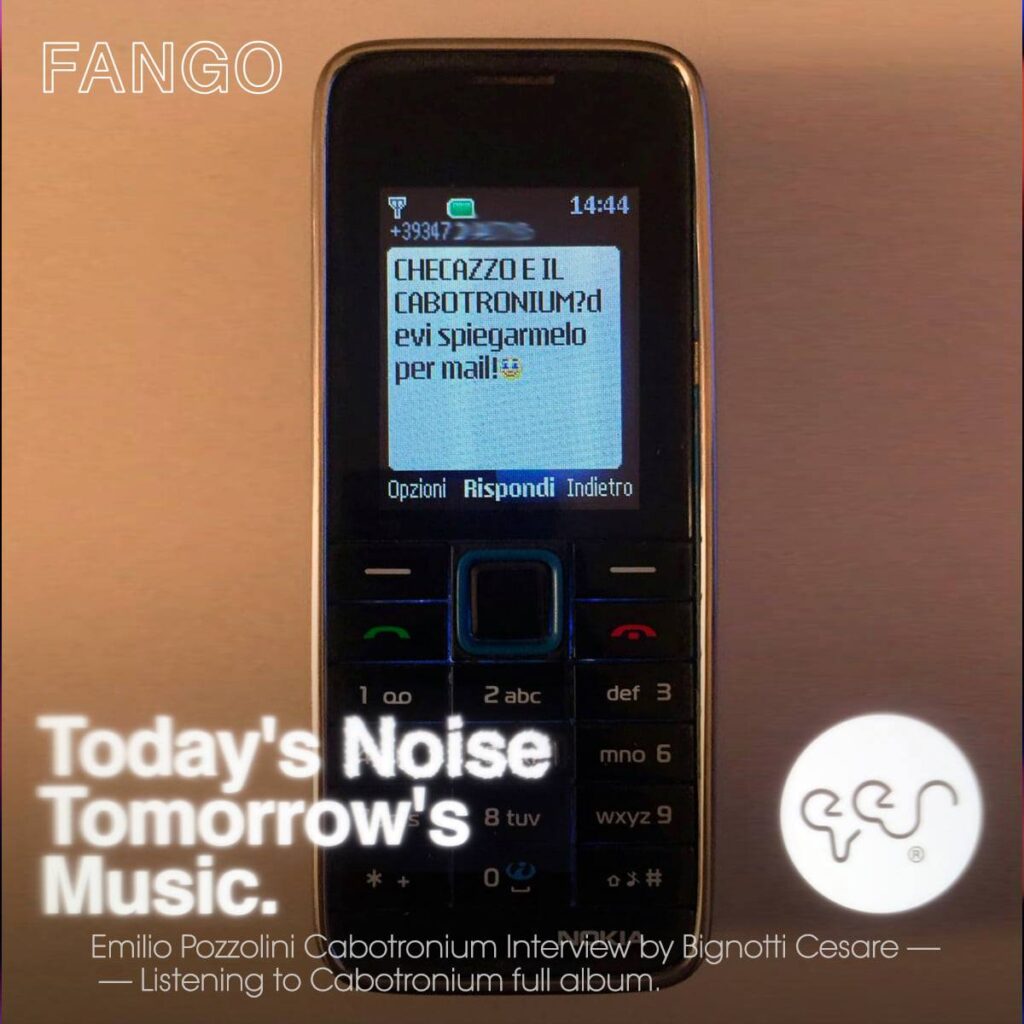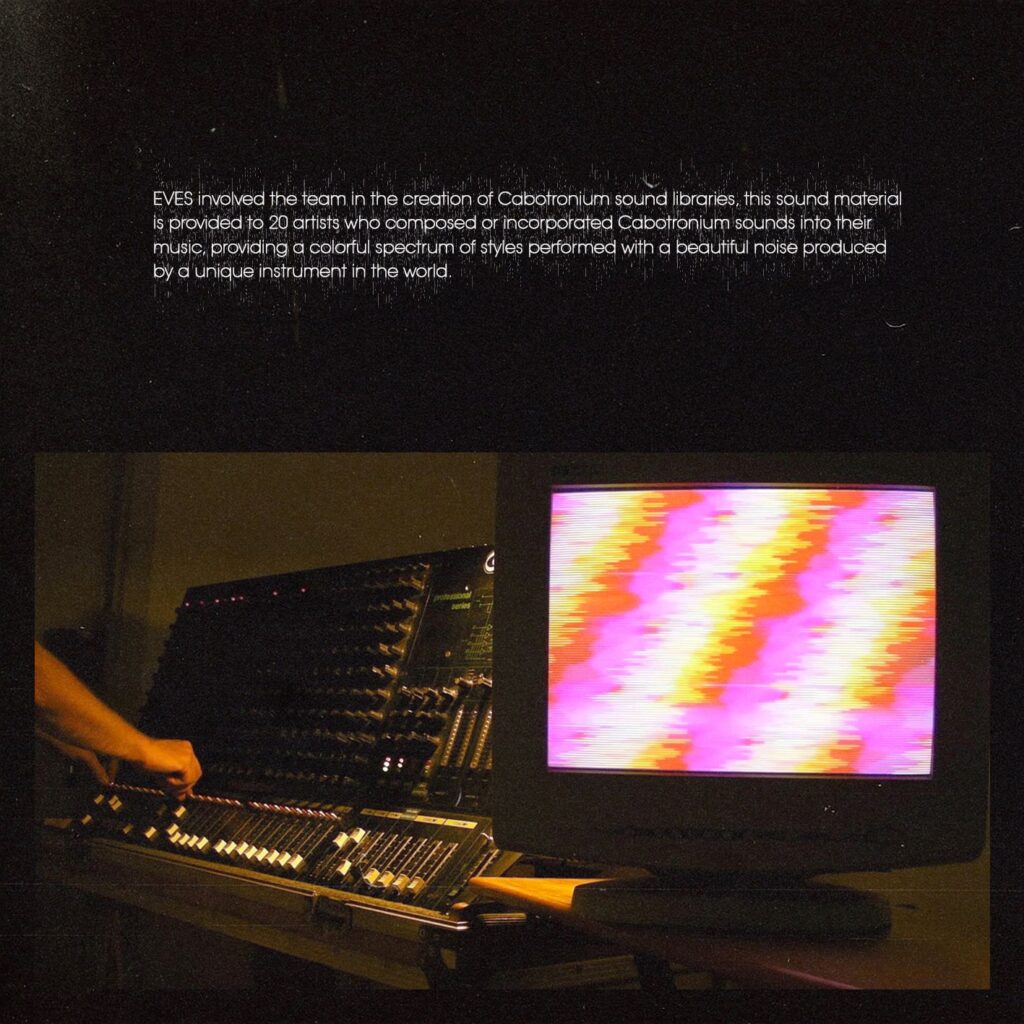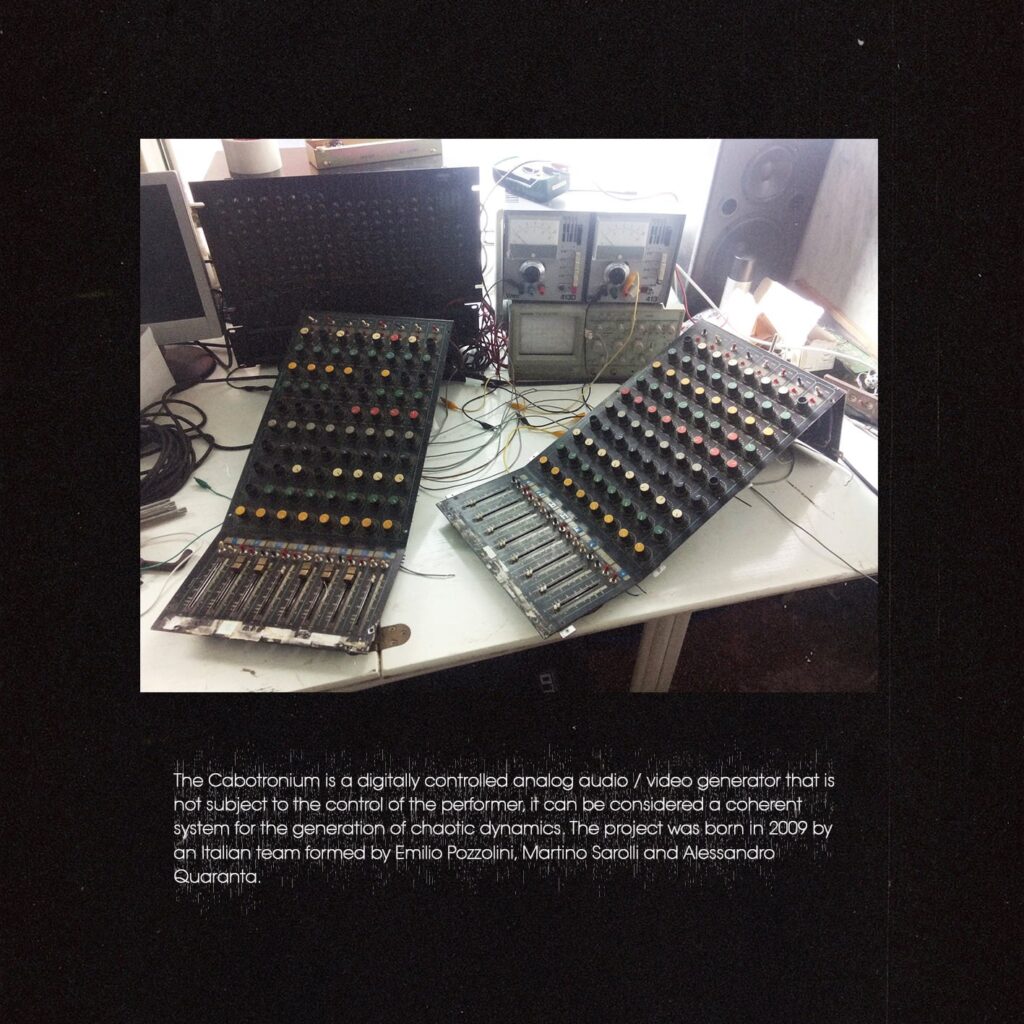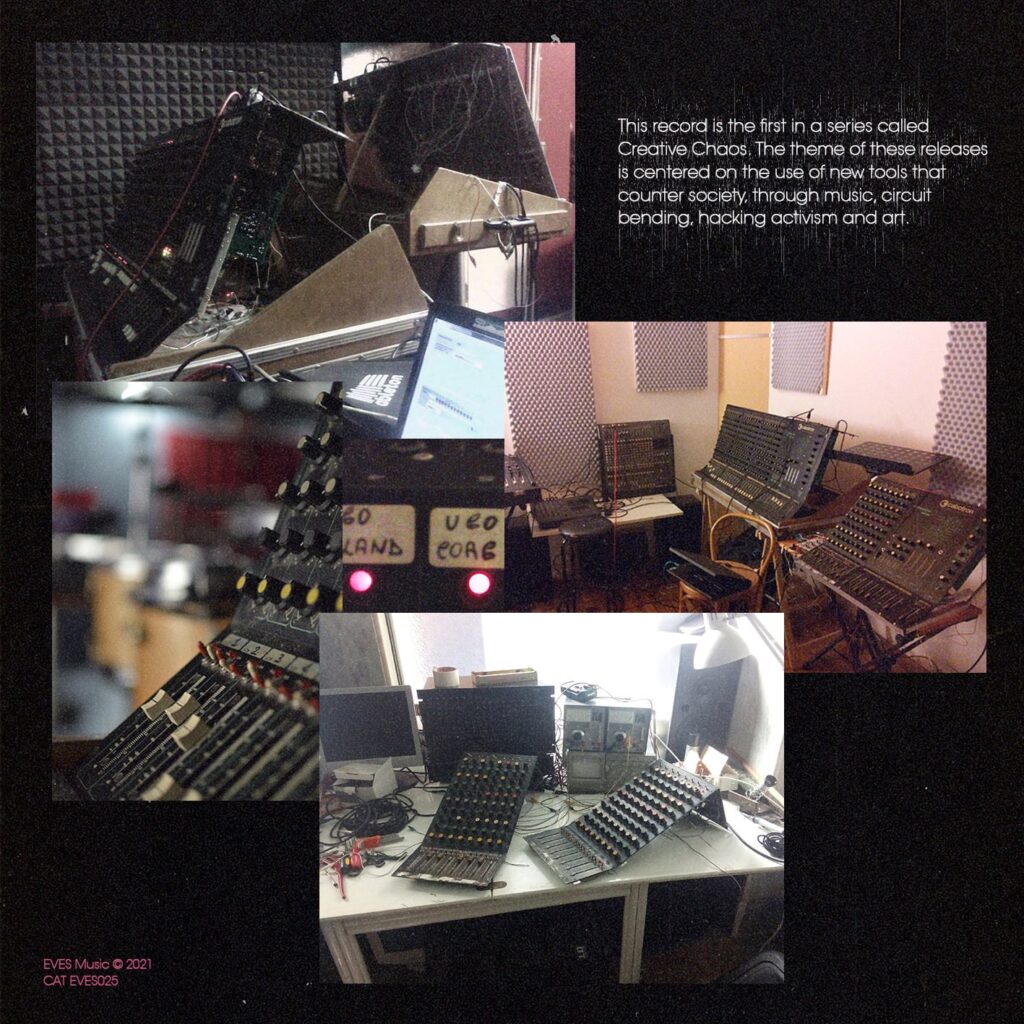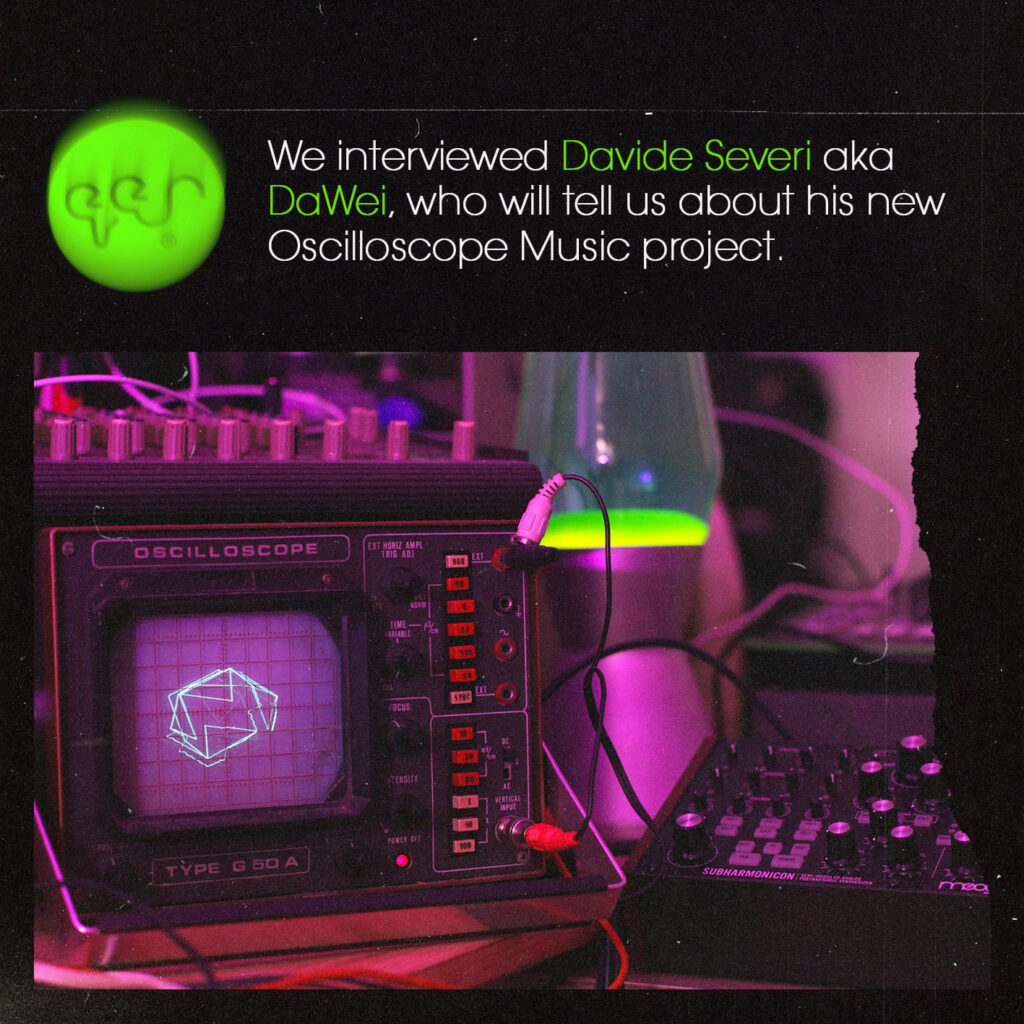To Day’s Noise, Tomorrow’s Music
EVES radio show, published on Fango Radio
the topic is focused on electronic music and new sounds, only Italian lenguages, probably from the next posts we will start publishing cultural articles in Italian: To Day’s Noise, Tomorrow’s Music
Cabotronium
Coherent system for generation and control of chaotic dynamics. Cabotronium is a digitally controlled analog generator of audio/video complexity. It is named after the ‘Cabotron’ – the brandname of the old mixers that we transform into synthesizer through circuit-bending. Project developed by Emilio Pozzolini with Martino Sarolli and Alessandro Quaranta.
The main characteristic of the Cabotronium is the impossibility of having a total control on the process of the signal generation. The feedback loop inside the circuit involves an intrinsic instability of the signal, which tends to modulate even if the parameters of its electronic components are kept constant. The act of “playing” the Cabotronium is not an inflected form of the mechanistic paradigm, which is based on the causal nexus. Thus, there is no constant and fixed relation between the player’s gesture and the sound/image which follows. In a complex system like the circuit-bent mixer, a linear variation of a parameter does not produce a corresponding linear variation of the signal: Cabotron is a singularities generator that is not subdued to the control of the performer.
Tomorrow (Wednesday 21 April 2021) from 7pm to 9pm on Fango Radio – Today’s Noise, Tomorrow’s Music Special Radio Show by EVES — Listening to the entire Cabotronium compilation, two hours of music with a special interview with Emilio Pozzolini, head of the Cabotronium project, interviewed by Cesare Bignotti, executive producer of the project compilation and creative director of EVES: https://www.fangoradio.com/shows/151#cabotronium
Oscilloscope Music
Davide Severi, aka Da’wei, started making electronic music in 1996, after having completed classical piano studies. Among the various interests connected to music, at the turn of the millennium there is the one for cymatics and sound-matter interactions, and in particular for the Lissajous forms, which are formed with the relationship between two harmonic frequencies.
When he discovers that these can be created and displayed on an oscilloscope, he pushes himself into research and experimentation that will lead to the creation of various songs designed to be heard as much as observed, on a magical analog screen, traced by a bright point of light.
At the following link: https://www.fangoradio.com/shows/151#oscilloscope-music-davide-severi-dawei
a special interview with Davide, head of the Oscilloscope Music project, interviewed by Cesare Bignotti:

